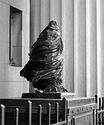DanielStone
Member
very true. very true. but its a good thing to have a few masters rather than many. that way we can determine who the "masters" are. I mean, if everyone could paint a Picasso, there wouldn't be a Picasso, or if you could design homes like F.L. Wright, his name wouldn't stand out like it does today. So having a few "masters" helps to keep the "doers", and actual teachers in the spotlight, where they should be. And the "look-alikes" and "copy-cats" just fall by the wayside.
Ansel did a tremendous job of documenting how he worked, and photographed. He saw that there were things that needed to be known by many photographers, and he had a terrific way of expressing that, either via printed matter(his books, texts, or articles) or his video documentaries on television.
I just wish that more of the "masters", in particular, Edward and especially, Brett Weston, had more work to put out there. But then again, maybe they weren't teachers and "helpers" like Ansel was.
-Dan
Ansel did a tremendous job of documenting how he worked, and photographed. He saw that there were things that needed to be known by many photographers, and he had a terrific way of expressing that, either via printed matter(his books, texts, or articles) or his video documentaries on television.
I just wish that more of the "masters", in particular, Edward and especially, Brett Weston, had more work to put out there. But then again, maybe they weren't teachers and "helpers" like Ansel was.
-Dan





 - I am so jealous. Thanks for info - I will definitely search for this book
- I am so jealous. Thanks for info - I will definitely search for this book  .
.